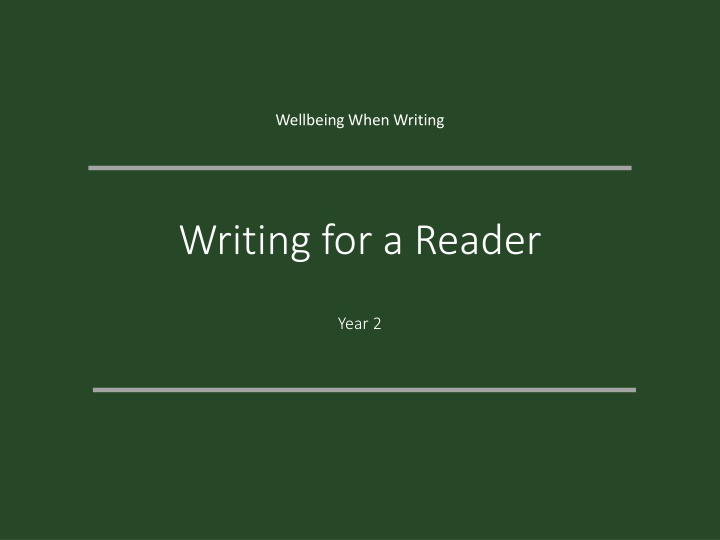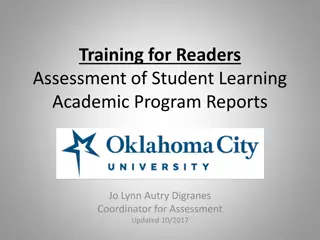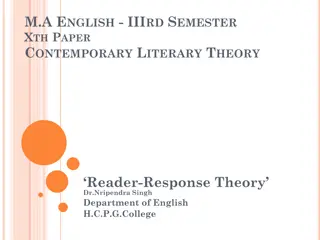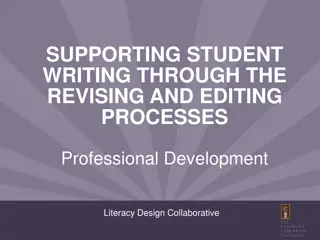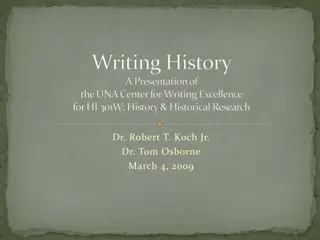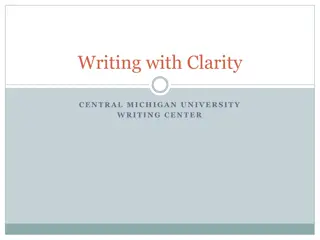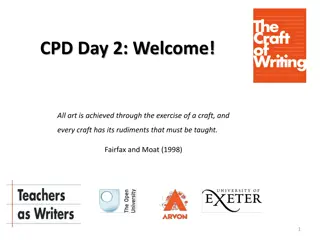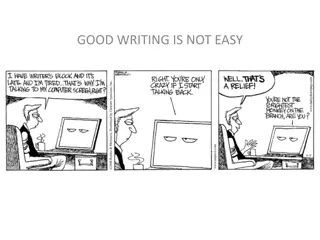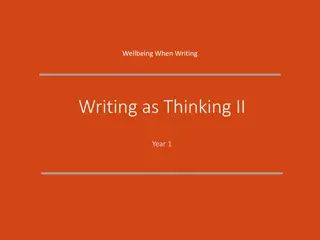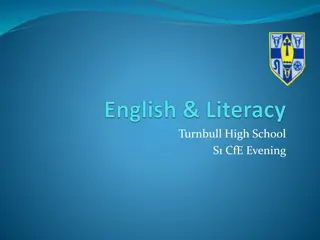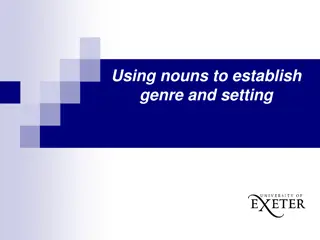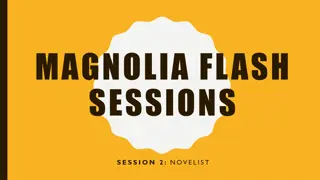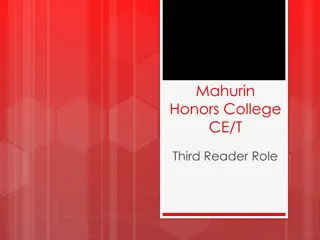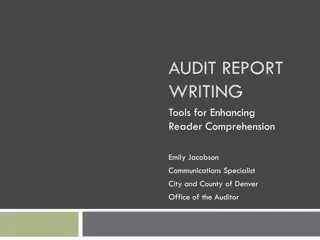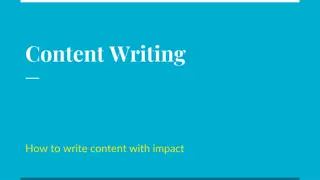Enhancing Reader Engagement Through Effective Writing Strategies
Explore the significance of considering your reader when writing thesis chapters and evaluating the use of incluing to guide readers effectively. Discover techniques used in SF reading protocols to create engaging narratives and build immersive worlds through incluing, challenging readers to piece together information seamlessly.
Download Presentation

Please find below an Image/Link to download the presentation.
The content on the website is provided AS IS for your information and personal use only. It may not be sold, licensed, or shared on other websites without obtaining consent from the author.If you encounter any issues during the download, it is possible that the publisher has removed the file from their server.
You are allowed to download the files provided on this website for personal or commercial use, subject to the condition that they are used lawfully. All files are the property of their respective owners.
The content on the website is provided AS IS for your information and personal use only. It may not be sold, licensed, or shared on other websites without obtaining consent from the author.
E N D
Presentation Transcript
Wellbeing When Writing Writing for a Reader Year 2
Delivered by: Delivered by: [Facilitator Name], [Facilitator Title}
Learning outcomes: Learning outcomes: Consider your reader when writing thesis chapters Evaluate the uses of incluing for guiding your reader through your chapters at APR2
Dear Reader: considering audience Dear Reader: considering audience Write a synopsis of your research aimed at an expert in your field (max 150 words) Now write a synopsis aimed at a person outside your subject area (max 100 words). Next, write a one-sentence synopsis of your work aimed at primary school children. Share with a partner from another subject area. Ask them what they understand about your work, if there was any terminology they didn t understand, if they have any unanswered questions? (This is known as workshoping)
Incluing Incluing SF Reading Protocols by Jo Walton, Tor https://www.tor.com/2010/01/18/sf-reading-protocols/ Having a world unfold in one s head is the fundamental SF experience. It s a lot of what I read for. Delany has a long passage about how your brain expands while reading the sentence The red sun is high, the blue low how it fills in doubled purple shadows on the planet of a binary star. I think it goes beyond that, beyond the physical into the delight of reading about people who come from other societies and have different expectations.
Incluing Incluing Because SF can t take the world for granted, it s had to develop techniques for doing it. There s the simple infodump, which Neal Stephenson has raised to an artform in its own right. There are lots of forms of what I call incluing, scattering pieces of information seamlessly through the text to add up to a big picture. The reader has to remember them and connect them together. This is one of the things some people complain about as too much hard work and which I think is a high form of fun.
Incluing Incluing SF is like a mystery where the world and the history of the world is what s mysterious, and putting that all together in your mind is as interesting as the characters and the plot, if not more interesting. We talk about worldbuilding as something the writer does, but it s also something the reader does, building the world from the clues. When you read that the clocks were striking thirteen, you think at first that something is terribly wrong before you work out that this is a world with twenty-four hour time and something terribly wrong. Orwell economically sends a double signal with that.
Incluing Incluing Because there s a lot of information to get across and you don t want to stop the story more than you can help, we have techniques for doing it. We have signals for what you can take for granted, we have signals for what s important.
Incluing Incluing - - discussion discussion Do you think this technique could be useful when considering the audience for your thesis? Think of it as your world, and how you can help your reader understand and navigate this world you have built.
Further information (online) Further information (online) #PhDchat #PhDAdvice #AcWri #ShutUpAndWrite @WriteThatPhD https://thesiswhisperer.com https://www.vitae.ac.uk
General Mathematics
